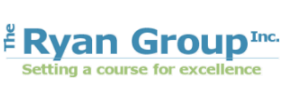10 Dynamic Business Models That Will Challenge Your Thinking and Change Your Business.
Why Models?
One of the most compelling reasons for using models, particularly when it involves the construction, validation, and application of theories is it engages the participant and user in the higher level skills of thinking and experimenting.
Models also provide unique opportunities for problem solving within an environment of interactive engagement. Evidence shows that significant learning gains are achieved when people participate in interactive engagement activities. Thus, it is important that the learning environment/activity created around a model provide an interactive engagement experience.
Working with models can enhance systems thinking abilities. Models and model development is a powerful approach to visualization as well as developing conceptualizing skills
The knowledge gained while using models and the understanding of model development and implementation are transferable to numerous other disciplines.
Why Simulation?
Restating the above, models engage the participant, significant learning gains are achieved, they enhance systems thinking abilities, are a powerful approach to visualization, and are transferable to numerous other disciplines.
Education-based and competency-based learning in particular must acknowledge and account for the characteristics of adult learners and the learning strategies that work best with adults. Adult learners expect, and deserve, to conclude the experience with competencies that can directly and immediately be applied on the job. In the case of education opportunities, participants must be able to recognize and use the competencies in real job situations or “training-in-context.”
Simulations and role-play rank high among the most useful learning techniques for emphasizing a training-in-context concept, where the learning environment approximates the workplace environment in as many contextual ways as possible.
The 10 Models
- Creating a Future: Hedging, Leveraging, and Shaping
- Executing Strategic Intent: Identifying Critical Processes Linked to Strategic Intent
- Determining Structure and Culture: Organizational Frameworks
- Assessing Business Savvy: The Progression of Competence
- Becoming Market Leaders: Creativity and Innovation
- Leveraging Synergies: Managing the Field of Variance
- Creating Change: Context, Assumptions, Challenges, Priorities, and Value Creation
- Uncovering Economies: Cost Sourcing and Solutions Mapping
- Managing Performance: Visualization and Transparency
- Assessing Inefficiencies: 10 Degrees of Productivity
Workshops
Public workshops with open enrollment.
Private in-house workshops at client site or off site.
University-sponsored workshops with complementary seats for professors.
Schedule
Workshops are scheduled throughout the year at various locations. Please contact us for current schedule.
Cost
Cost varies according to workshop type. Please contact us.
Contact
The Ryan Group, Inc.
(214) 613-2482
www.ryangroupinc.com
Wayne Davis
wayne.davis@ryangroupinc.com
